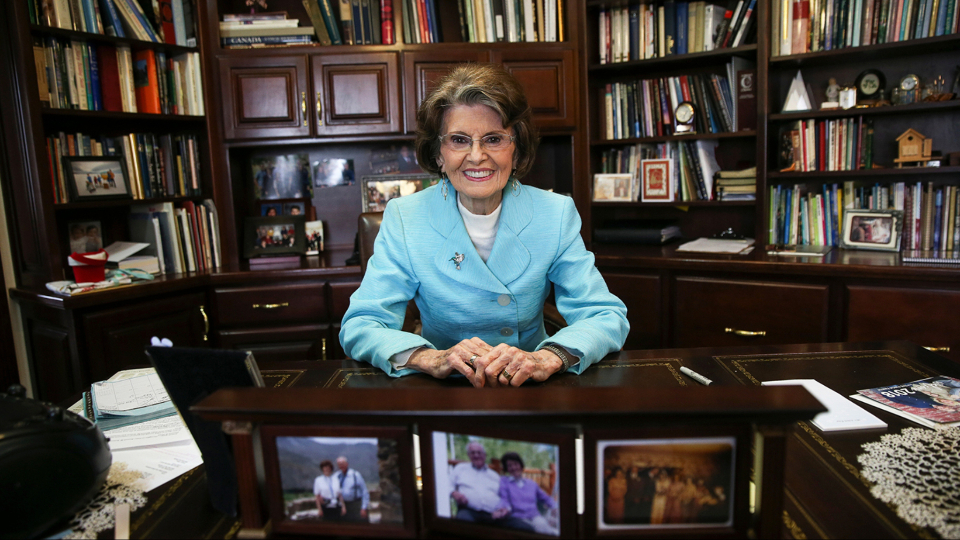
Ardeth-G.-Kapp
Former Young Women General President Ardeth G. Kapp poses for a photo at her home in Bountiful on Thursday, January 11, 2018. Sister Kapp died on March 30, 2024. Photo by Spenser Heaps, courtesy of Church News. Copyright 2024 Deseret News Publishing Company.This story appears here courtesy of TheChurchNews.com. It is not for use by other media.
By Kaitlyn Bancroft, Church News
Former Young Women General President Ardeth Greene Kapp died Saturday, March 30. She had turned 93 years old only a few days earlier.
Sister Kapp served as the ninth Young Women general president of The Church of Jesus Christ of Latter-day Saints from 1984 to 1992 and became a mentor to hundreds of thousands of Latter-day Saint young women. Her presidency was highlighted by the introduction of the Young Women values and the strong growth of the Personal Progress program that concluded in 2019.
Funeral services are pending.
Early Years
Sister Kapp was born March 19, 1931, to June Leavitt and Ted Greene. She grew up in the small town of Glenwood in Alberta, Canada. As a child, she worked in her family’s country grocery store, and she was also called to teach in Primary at an early age.
“I was raised in a family which placed a high priority on obedience,” she told the Ensign magazine in 1984. “I feel comfortable taking counsel from and following Church leaders.”
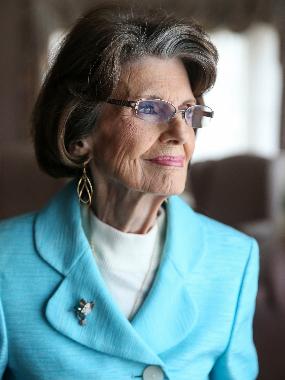
Women-advisers
Former Young Women General President Ardeth G. Kapp poses for a photo at her home in Bountiful, Utah, on Thursday, January 11, 2018. Photo by Spencer Heaps, courtesy of Church News.Copyright 2021 Deseret News Publishing Company.Though Sister Kapp’s town consisted of only about 250 people, it is where she met her future husband. Heber Blaine Kapp was a missionary in the Western Canadian Mission from 1947 to 1949, and served in the ward where Ardeth’s father was the bishop. He described the then-16-year-old in his journal as “cute and fun, but kind of young.”
Sister Kapp later attended Brigham Young High School (which ceased operation in 1968) in Provo, Utah. Now-President Dallin H. Oaks was a fellow classmate and wrote in her high school yearbook that she has “a wonderful soul that is your most prized possession,” LDS Living reported.
Of leaving her small town to attend high school in Utah, Sister Kapp said, “I had never excelled in school, but ... I had a strong impression I should get an education, though many people told me that was foolish. ... People sometimes have a lot of counsel for you. But finally you have to follow your own promptings, even though it may not make sense to others until later. You have to dare to walk it alone, sometimes. ... It was kind of like climbing a ladder. I had to let go with one hand before I could take the next step. ... [It] was a blessing in disguise.”
During her time at Brigham Young High School, she reconnected with Heber Kapp, the former missionary who had served in her hometown. They were married June 28, 1950, in the Cardston Alberta Temple.
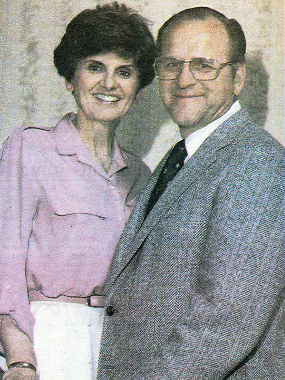
Ardeth-G.-Kapp
Ardeth G. and Heber B. Kapp in Bountiful, Utah, after Sister Kapp was called to serve as Young Women General President. Photo courtesy of Church News.Copyright 2024 Deseret News Publishing Company.The couple was unable to have children, which Sister Kapp said was her “greatest challenge.” However, in a 2022 LDS Living interview, she shared a blessing she received from President Gordon B. Hinckley, in which she was promised that she would raise her children during the Millenium.
“And I just remember thinking, ‘Oh, if I’d have just known that 30 years sooner, it would have been so much easier,’” Sister Kapp said. “But I needed to be tried and tested. And it continues.”
Despite failing two grades in public school, Sister Kapp became a teacher who earned a bachelor’s degree from the University of Utah and a master’s degree in curriculum development from Brigham Young University.
She was a teacher in the Davis County School District, wrote TV programs for the Utah Network of Instructional Television, taught in the BYU College of Education where she coordinated the Student Leadership Development program, and served on many boards and committees such as the Church Curriculum Planning Committee, the Church Educational System and Desert Book Company.
She is also the author of multiple books, including “Better Than You Think You Are,” “Doing What We Came to Do,” and “The Joy of Believing.”
Young Women Program
Sister Kapp’s Young Women service began in 1972, when she was called as second counselor in the Young Women general presidency under President Ruth H. Funk. She served in that capacity until 1978. In 1984, she was called herself as the Young Women general president in the same session of general conference when President Russell M. Nelson and President Dallin H. Oaks were sustained as members of the Quorum of the Twelve Apostles.
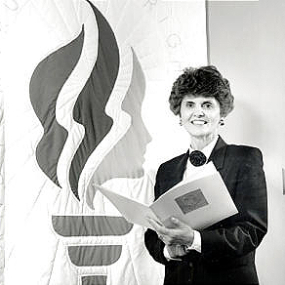
Ardeth-G.-Kapp
Sister Ardeth Kapp, former Young Women General President, introduced the original Young Women theme and values. Photo courtesy of Church News archives. Copyright 2024 Deseret News Publishing Company.Invited to speak in that general conference without notice, Sister Kapp shared a message of confidence in Church leaders and hope for parents of youth.
“It has been my privilege to know of the power and strength of the Brethren who sit in the councils of the Church, guiding this great work in these latter days. And we are part of that great work. We will work to have every young woman throughout the Church stand in the valiant ranks of loyalty, commitment and dedication. Mothers, stand firm; and fathers, have courage to be strong. Leaders, support those great parents. And together in unity we’ll prepare a generation that will be prepared for the Lord’s commendation, that He may have a house of worthy members when He returns.”
In 1985, Sister Kapp, along with her counselors and general board members, introduced the Young Women theme and values to the Church under the direction of the First Presidency, the Church News reported.
Reflecting on the yearlong journey of discovery in developing the values, Sister Kapp recalled the “confusion in the world about the roles of women.” So she and her counselors at that time, the late Sisters Patricia Holland and Maurine Turley, along with others, began with what they considered three critical issues in the lives of young women: “a sense of their own identity,” “a sense of direction,” and an answer to the question, “What is my purpose?”
They then looked at “pillars” indispensable to members of the Church: baptism and the ordinances and covenants of the temple.
From those critical issues and pillars came the Young Women Theme: “We are daughters of our Heavenly Father. ... We will ‘stand as witnesses of God at all times and in all things, and in all places ...’ " (Mosiah 18:9).
Values were developed, as opposed to goals, Sister Kapp said. “Goals can change, but values never change. Values are the lodestar, they are anchors. If you have your values in place, then you have a basis to make decisions.”
That is why the goals of Personal Progress, already in place in 1985, fit within the framework of the Young Women values. The colors of the Young Women values were simply easy reminders for young women, Sister Kapp said.
She also said that the Young Women logo accompanying the motto had to be “universal. It needed to be timeless.” That is why her presidency chose the outline of a young woman’s face in a torch’s flame, the latter of which represented light. Sister Kapp called it “such a simple thing that needed no translation for anyone.”
After receiving priesthood approval for the Young Women motto, theme and values, Sister Kapp knelt with her counselors and others and “expressed gratitude for guidance far beyond our natural ability.”
The first Young Women satellite broadcast was held on November 10, 1985, during which the new Young Women theme and values were introduced.
In 1986, the first Young Women worldwide celebration — “Rising Generation” — was commemorated by inviting young women to write out their testimonies, attach them to helium-filled balloons, and release the balloons into the sky.
The Personal Progress program later launched in 1989. (It was discontinued in 2019, replaced by a new global initiative for children and youth.)
Years later, during a 2010 luncheon honoring her and the late Sister Elaine A. Cannon, Sister Kapp recalled working with her counselors and board to create the Young Women theme and identify Young Women values.
The presidency, Sister Kapp said, worked as hard as they could and then took their recommendations to their priesthood leaders. Before the meeting, Sister Kapp said they knelt in prayer and asked the Lord to open the Brethren’s ears to their recommendations, if they were right and if the time was right for them to be unveiled.
At the end of the meeting, the late Elder David B. Haight of the Quorum of the Twelve Apostles stood up and said, “‘Sisters, today you have not only opened up our eyes, but also our ears,’” recalled Sister Kapp. “‘We know who is in charge.’”
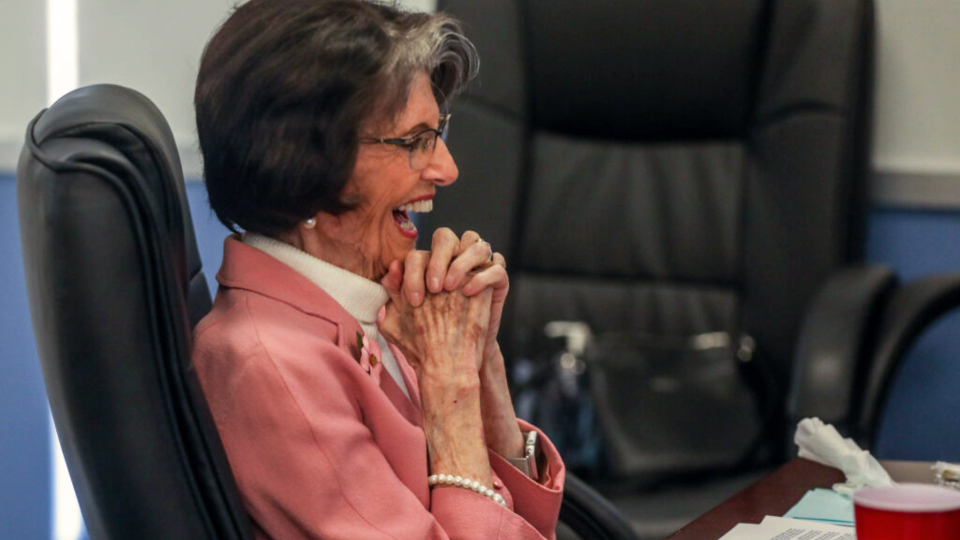
Ardeth-G.-app
Sister Ardeth Kapp speaks with friends during a Zoom call to celebrate her 90th birthday at Thanksgiving Point on Sunday, March 21, 2021. Photo by Annie Barker, courtesy of Church News.Copyright 2024 Deseret News Publishing Company.Later Years
After her release as Young Women General President, Sister Kapp accompanied her husband to the British Columbia Vancouver Mission, where he had been called as mission president. They led the mission from 1992 to 1995, and later served as president and matron of the Cardston Alberta Temple — the same temple they had been married in over 50 years earlier — from 2000 to 2003.
Heber Kapp died in 2017 at the age of 91. Of her husband, Sister Kapp once said, “I feel deep gratitude for a companion who is committed to encouraging my total dedication.”
Sister Kapp celebrated her 90th birthday in 2021. During a birthday celebration, Sister Patricia Holland said Sister Kapp “taught faith, hope and charity,” the Church News reported.
On the same occasion, the late Sister Janette Hales Beckham, who served as a counselor to Sister Kapp prior to being called as the 10th Young Women General President, said she remembered many instances when something unexpected happened. Each time, she said, Sister Kapp “would bow her head in prayer and then raise it and say to us, ‘This will turn to our good.’”
Irene Ericksen, who served on the Young Women General Board (now known as the Young Women General Advisory Council), told Sister Kapp that “You are one of the most influential women of the Church. One of your greatest qualities is always lifting others.”
Sister Kapp was honored again in June 2022, when a new pavilion at Heber Valley Camp was named for her life and service. Former general women leaders, as well as campers and volunteers at Heber Valley Camp, attended the ceremony, held on a cold, windy afternoon at the entrance to the 9,000-acre camp located in the mountains above Heber, Utah.
Sister Kapp, standing in front of colorful camp flags, called the rising generation a “mighty force for righteousness.”
“We give thanks for this camp that helps young women — and older women — understand the following: ‘Trust in the Lord with all thine heart; and lean not unto thine own understanding. In all thy way acknowledge him, and he shall direct thy paths’ (Proverbs 3:5-6),” she said.
President Jeffrey R. Holland, Acting President of the Quorum of the Twelve Apostles, dedicated the new pavilion, recalling moving his young family to Bountiful, Utah, almost five decades earlier and being greeted by Sister Kapp riding her bicycle. Sister Holland would later serve as Sister Kapp’s counselor in the Young Women general presidency.
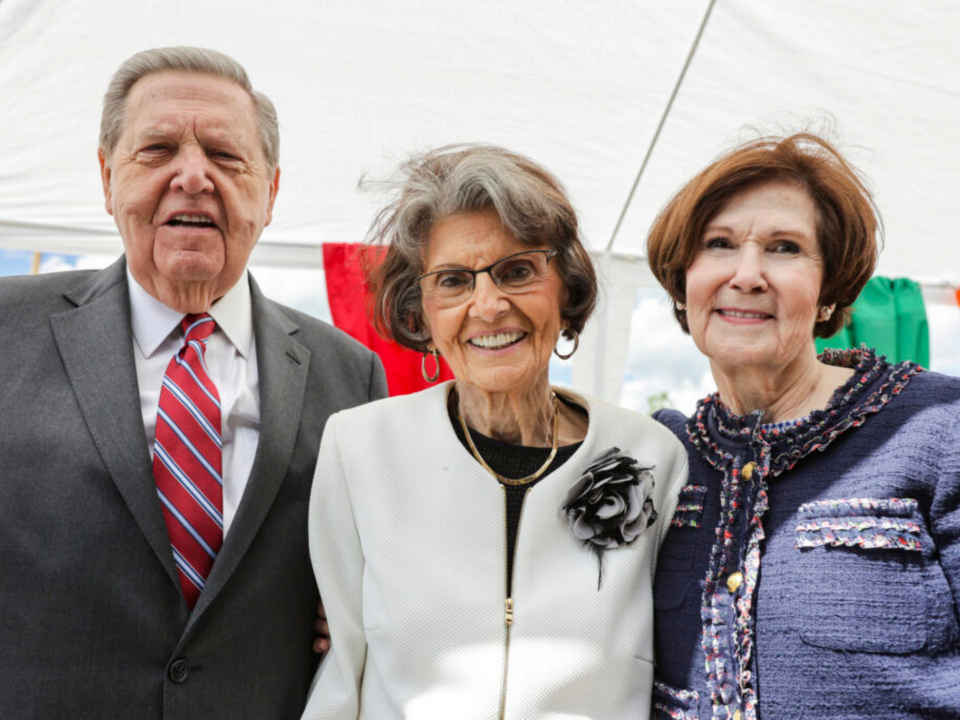
Kapp-pavilion
Elder Jeffrey R. Holland of the Quorum of that Twelve Apostles, Sister Ardeth G. Kapp, former Young Women General President; and Sister Patricia T. Holland, former counselor in the Young Women General Presidency, pose after the Ardeth G. Kapp Pavilion dedication service at the Heber Valley Camp in Heber, Utah, on Monday, June 20, 2022. Photo by Mengshin Lin, courtesy of Church News.Copyright 2022 Deseret News Publishing Company.Elder Holland said the work accomplished under the presidency of Sister Kapp, Sister Holland and Sister Maurine Turley was foundational for all that has followed for Latter-day Saint young women. “In that short period, the young women of the Church took on an identity and a destiny — and the significance of that will always be attributed to the Ardeth Kapp era.”
It is fitting, he said, that the name Ardeth Greene Kapp will be the first thing young women will see as “they come to this dedicated space and the last that they will see as they tearfully bid it goodbye. She whose name will now be associated with this pavilion will — with a radiant, contagious and ever-enthusiastic smile — remind entire generations of campers that they should stand as witnesses of God at all times and in all things and in all places.”
Copyright 2024 Deseret News Publishing Company.
